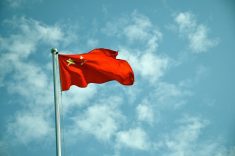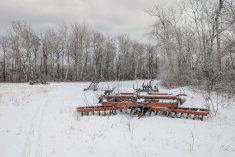Livestock producers in 10 more waterlogged Prairie rural municipalities will be allowed to defer income from sales of breeding stock for income tax purposes.
The federal government on Wednesday announced the additions to its list of deferrals, which it grants regularly to producers across Canada in areas hit by drought or excess moisture and thus forced to sell animals that can’t be readily fed or pastured.
Eligibility for the deferrals for the 2010 tax year was first announced in November for over 90 RMs in Saskatchewan and over 40 RMs and other areas in Manitoba, all due to excess moisture.
Read Also

U.S. livestock: Cattle futures surge as second screwworm case announced
Chicago | Reuters – Chicago Mercantile Exchange cattle futures rallied on Friday as two new screwworm cases were announced in…
After that announcement, assessment of the excess moisture situation continued as more data about forage yields became known, the government said Wednesday, and decided to expand the tax deferral areas given the impacts of high rainfall, flooding and saturated soils on forage production and feed supplies made available.
Excess moisture conditions led to both poor yields and feed shortages in the affected areas of Manitoba, the government said. The newly eligible areas include the RMs of Albert, Arthur, Brenda, Cameron, Edward, Pipestone, Sifton and Winchester in the southwest, and the RM of Kelsey, near The Pas in the far northwest of the province’s grain- and livestock-producing regions.
The RM of Vanscoy, in west-central Saskatchewan southwest of Saskatoon, was added due to the “large amounts of pasture land under water or inaccessible.”
The tax deferral option allows eligible producers in such designated areas to defer income tax on the sale of breeding livestock for one year, to help replenish breeding stock in the following year.
To defer income, a producer’s breeding herd must have been reduced by at least 15 per cent. If that’s the case, 30 per cent of income from net sales can then be deferred. In cases where a herd has been reduced by more than 30 per cent, then 90 per cent of income from net sales can be deferred.
Proceeds from deferred sales are included as income in the next tax year, when they can be at least partially offset by the cost of reacquiring breeding animals. If an area is consecutively designated for two years or more, producers can defer sales income to the first year in which the area is no longer designated.
Eligible producers will be able to ask for the deferral when filing their 2010 income tax returns.














